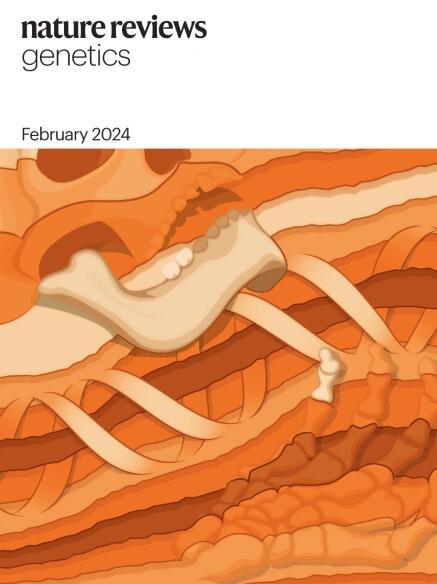Molecular mechanisms of environmental exposures and human disease
IF 39.1
1区 生物学
Q1 GENETICS & HEREDITY
引用次数: 13
Abstract
A substantial proportion of disease risk for common complex disorders is attributable to environmental exposures and pollutants. An appreciation of how environmental pollutants act on our cells to produce deleterious health effects has led to advances in our understanding of the molecular mechanisms underlying the pathogenesis of chronic diseases, including cancer and cardiovascular, neurodegenerative and respiratory diseases. Here, we discuss emerging research on the interplay of environmental pollutants with the human genome and epigenome. We review evidence showing the environmental impact on gene expression through epigenetic modifications, including DNA methylation, histone modification and non-coding RNAs. We also highlight recent studies that evaluate recently discovered molecular processes through which the environment can exert its effects, including extracellular vesicles, the epitranscriptome and the mitochondrial genome. Finally, we discuss current challenges when studying the exposome — the cumulative measure of environmental influences over the lifespan — and its integration into future environmental health research. Environmental pollutants have been shown to disrupt molecular mechanisms underlying common complex diseases. The authors review the interplay of environmental stressors with the human genome and epigenome as well as other molecular processes, such as production of extracellular vesicles, epitranscriptomic changes and mitochondrial changes, through which the environment can exert its effects.

环境暴露与人类疾病的分子机制。
常见复杂疾病的疾病风险很大一部分可归因于环境暴露和污染物。对环境污染物如何作用于我们的细胞以产生有害健康影响的认识,使我们对慢性疾病(包括癌症和心血管、神经变性和呼吸系统疾病)发病机制的分子机制的理解取得了进展。在这里,我们讨论了环境污染物与人类基因组和表观基因组相互作用的新研究。我们综述了通过表观遗传学修饰(包括DNA甲基化、组蛋白修饰和非编码RNA)对基因表达产生环境影响的证据。我们还强调了最近的研究,这些研究评估了最近发现的环境可以发挥作用的分子过程,包括细胞外小泡、表转录组和线粒体基因组。最后,我们讨论了当前在研究暴露时面临的挑战,暴露是对环境影响在寿命中的累积测量,并将其纳入未来的环境健康研究。
本文章由计算机程序翻译,如有差异,请以英文原文为准。
求助全文
约1分钟内获得全文
求助全文
来源期刊

Nature Reviews Genetics
生物-遗传学
CiteScore
57.40
自引率
0.50%
发文量
113
审稿时长
6-12 weeks
期刊介绍:
At Nature Reviews Genetics, our goal is to be the leading source of reviews and commentaries for the scientific communities we serve. We are dedicated to publishing authoritative articles that are easily accessible to our readers. We believe in enhancing our articles with clear and understandable figures, tables, and other display items. Our aim is to provide an unparalleled service to authors, referees, and readers, and we are committed to maximizing the usefulness and impact of each article we publish.
Within our journal, we publish a range of content including Research Highlights, Comments, Reviews, and Perspectives that are relevant to geneticists and genomicists. With our broad scope, we ensure that the articles we publish reach the widest possible audience.
As part of the Nature Reviews portfolio of journals, we strive to uphold the high standards and reputation associated with this esteemed collection of publications.
 求助内容:
求助内容: 应助结果提醒方式:
应助结果提醒方式:


